This year marks the 950th anniversary of the 1066 Battle of Hastings, one of the defining moments of Great Britain. To mark the anniversary, a small troop of people have followed in King Harold's footsteps to march down to Hastings on foot and on horseback. This small group recently arrived in London and spent the day Saturday informing visitors of the famous battle and demonstrating examples of daily life and tasks that the people of Great Britain of that time had to do in order to survive. The small set-up was located in Hyde Park near Hyde Park Corner and featured demonstrations and talks about the following subjects: the battle, warfare, cooking, candle-making, weaving, leather-processing, physician and health treatment, pottery-making, metalwork, basket-weaving, and more. The day was hosted by English Heritage.
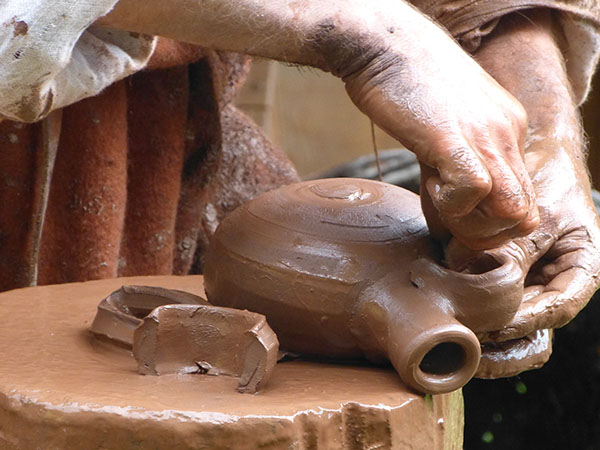
I arrived at around lunch time and listened to some of the talks that the demonstrators were having and engaging with other visitors. The talks were quite popular and engaging. I saw families and children taking part in basket-weaving and candle-making as well as getting photographs with armour and shields.
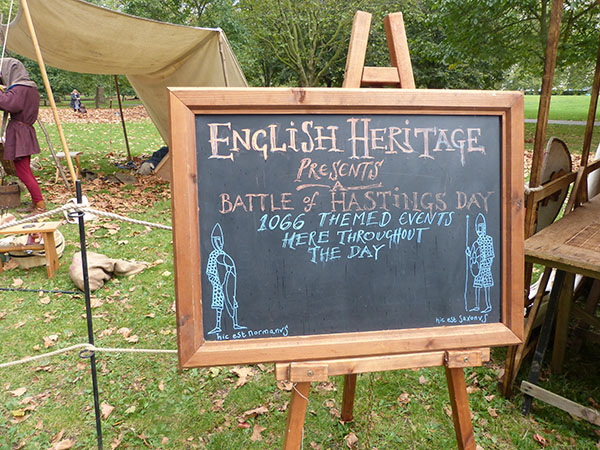
For those who do not know much of the history of the Battle of Hastings in 1066, I will give a brief introduction to it. The British Isles were constantly invaded by neighbouring people. King Harold had just defeated Vikings near York at Stamford Bridge in 1066 when he was informed about an invasion by the Normans, led by William the Conquerer. (William the Conquerer was from modern-day northern France/Netherlands/Denmark.) The Normans had invaded the south of England. King Harold tried to surprise the Normans by marching toward Hastings, but William's scouts warned him in advance. The big battle happened near Hastings. Both sides had roughly equal numbers of men, but the English had more foot soldiers and the Normans had archers. King Harold was killed on the battlefield. Afterwards, William marched to London and started to build his castle (now the Tower of London) there.
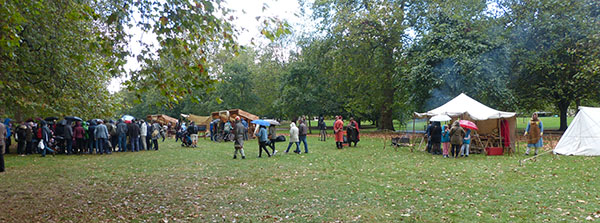
The small group of actors will be arriving in Hastings to re-create the battle at the castle in approximately a week.
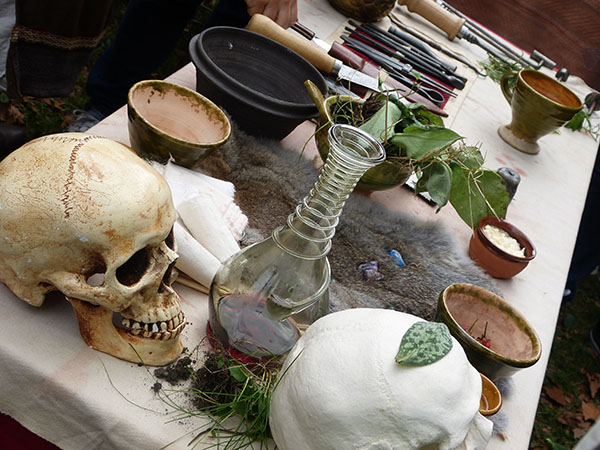
The first tent had a physician set up, and he was discussing the various tools used and how problems would have been solved. He showed us a hook that was used to break the skin and flesh and a saw that was used to saw through the bone to amputate a limb. The main arteries would have either been singed or had acid applied to stop the bleeding. He also detailed what the procedure would be to solve urinary tract problems, such as removing kidney stones.
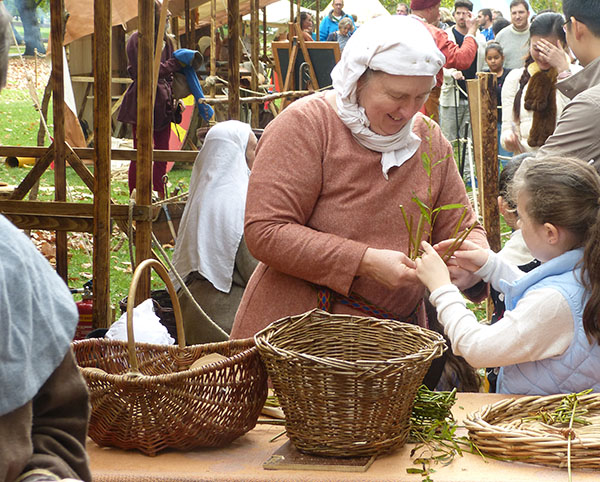
The next tent was demonstrating basket-weaving.
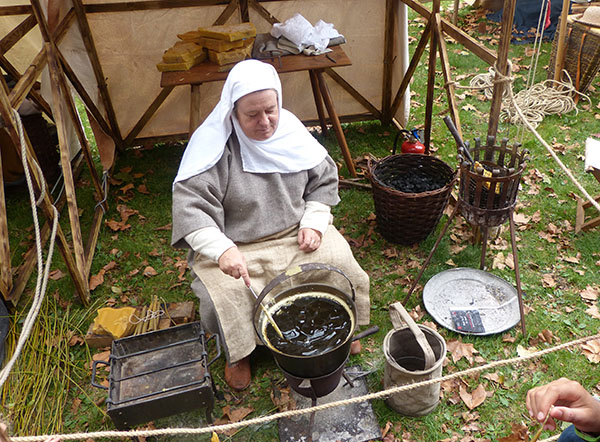
Another was demonstrating how to create candles.

The next one was a large area with a fire pit, and it was a metal-worker demonstration with a small anvil placed on a tree stump. The metal was heated and then hammered on top of the anvil.
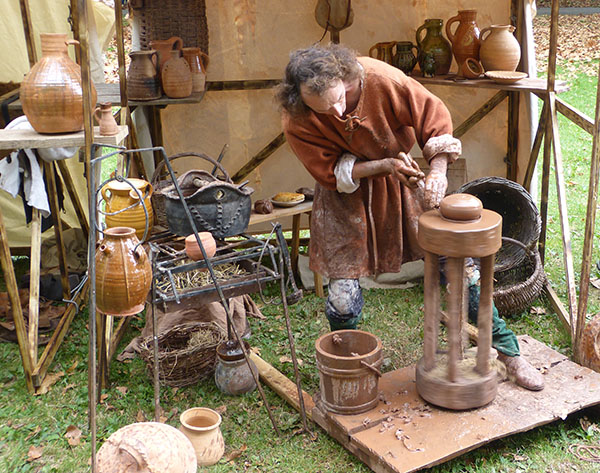
There was another one demonstrating leather-working. The next demonstrated pottery-making. The pot had been created, so he demonstrated how the spout and handle were created.

The spout and handle were created together. They were shaped, and he cut the spout off using a knife. This was then placed onto the pot. Using the remainder of the lump of clay, he made the ring larger before cutting it off. The ring was then cut in half, evened out, and then shaped onto the pot to create the handle.
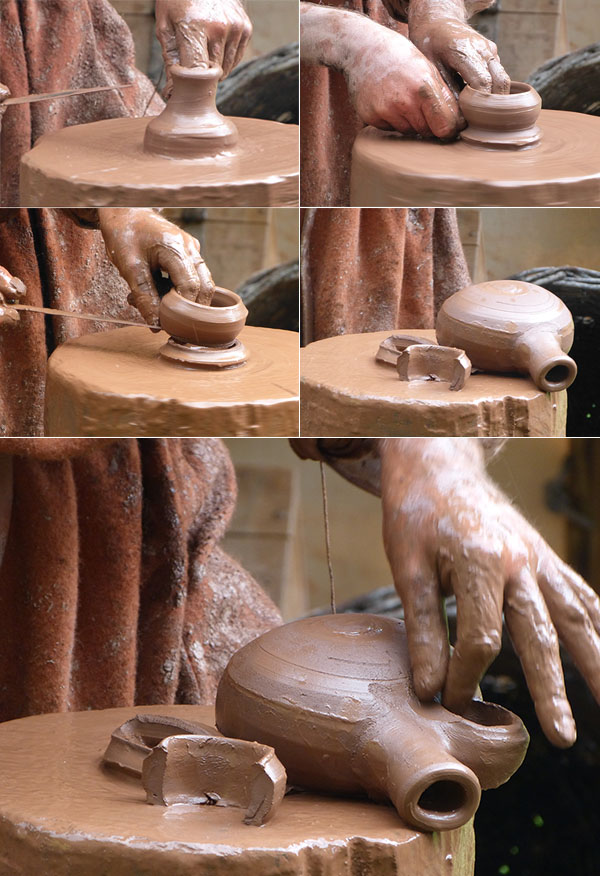
The busiest area was a talk about the Battle of Hastings using a map on the ground.
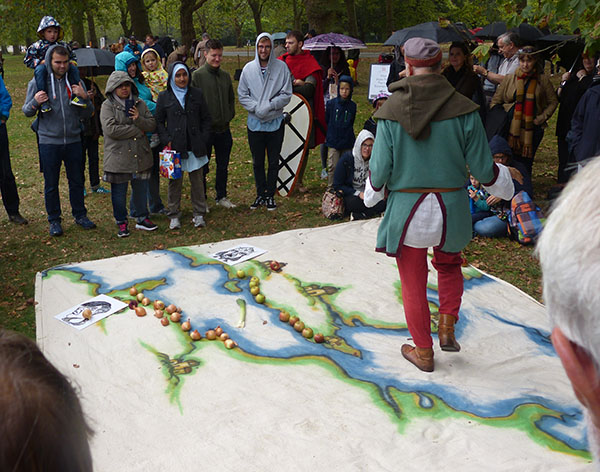
Out of nowhere, the heavens opened and we had a downpour. The Battle of Hastings history lesson was post-poned as the speaker told us to get underneath the nearby tree to shelter until the downpour stopped. It didn't last too long before it dwindled and then stopped altogether.
The men dressed as warriors in armour took shelter and took care of their armour; we were told that the pieces were very expensive. While he took shelter in the cookery tent, he talked about being one of the four who had done the entire march from Yorkshire. Eight others had done part of the walk. Most of the marching was done on foot and on horseback (in today's sensible shoes so that the expensive replica footware would not be damaged; the original men would have gone barefoot part of the time so that they would not wear out their shoes).
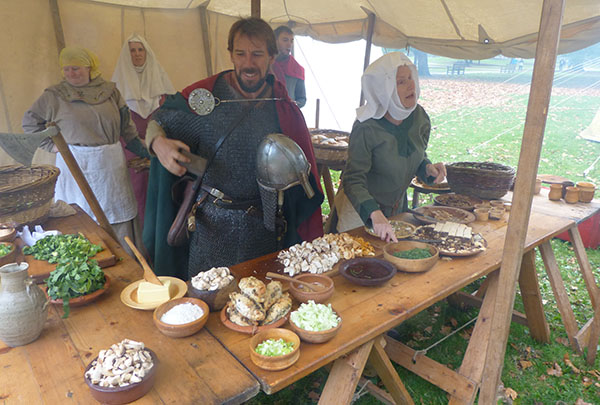
While I was standing near the cookery tent, I overheard the lady talk about the ingredients for the food. Samples were also offered to visitors. The food was also being cooked. The rain put most of the fire out, but it was brought back to life with air. A couple of pots were on the fire.
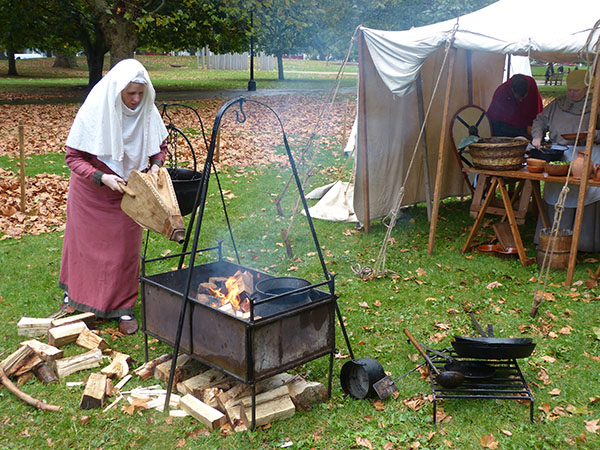
When the rain had completelt stopped, one of the ladies from the cookery tent took the weaving loom out again to demonstrate it. Near her were the armour tents and two horses.

Hyde Park was also looking particularly autumnal today.
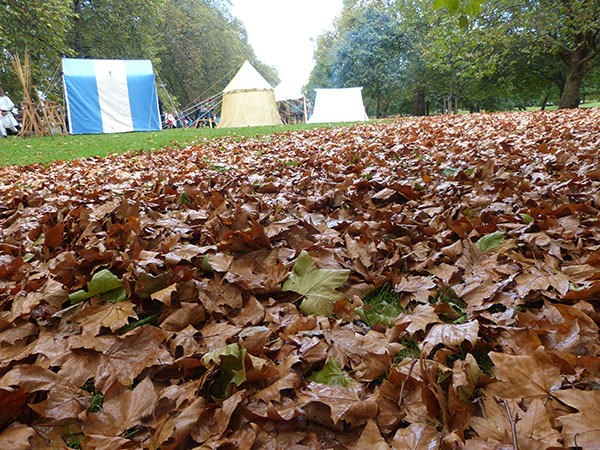
On the way out of the park, I saw the two horses being riden around the perimeter of the settlement.

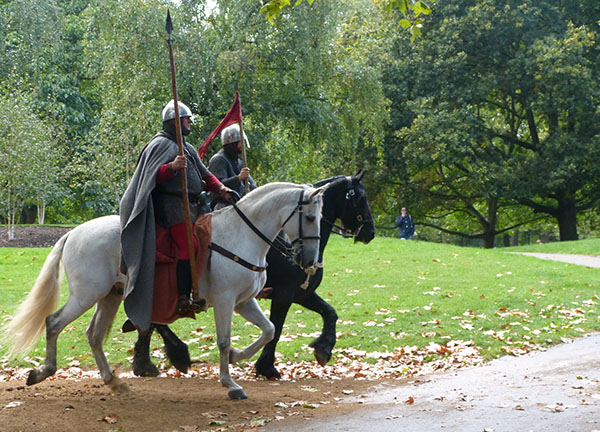
This was an informative little excurision, and after the downpour, the weather did brighten up a lot. The group had attracted a large crowd, and it's good to see so many people taking an interest in history and living history events.
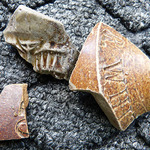

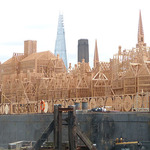
Leave a comment